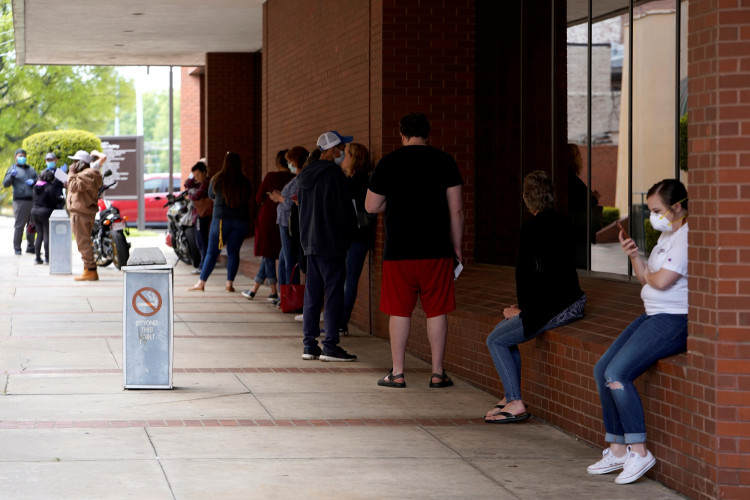More Americans than expected filed for unemployment benefits in the week ending May 23, taking the total number of Americans now unemployed to an unprecedented 40 million over the last 10 weeks. This statistic means one in four Americans is now jobless in the worst job crisis since the Great Depression of 1929. The U.S. workforce is estimated at 160 million.
In its weekly report released Thursday, the Department of Labor through its Bureau of Labor Statistics (BLS) said 2.12 million Americans filed jobless claims in this period. Economists were expecting some 2 million new claims.
The good news in this gloom engendered by the raging COVID-19, pandemic, however, is this new total is a decrease of 323,000 from the previous number. The labor department also increased the total number of unemployment benefits it reported last week by 8,000 claims to 2.446 million. It reported 2.438 million jobless claims last week.
The actual number of jobless claims in the week ending May 16 was nearly 1.2 million. UBS economist Seth Carpenter said more than a dozen states didn't report their initial Pandemic Unemployment Assistance (PUA) program claims, which accounts for the discrepancy.
BLS reported 1.19 million initial PUA claims last week following 1.2 million in the week prior. PUA covers workers ineligible for traditional unemployment such as self-employed persons and contractors.
BLS will release the May jobs report June 5, and economists widely anticipate the national unemployment rate will balloon to 19.5% from 14.7% in April. The highest monthly unemployment rate in the U.S. during the Great Depression of 1929 was 25%.
Goldman Sachs believes the massive U.S. employment crisis will be a huge burden for the economy for years to come. The crisis "is also unlikely to go away quickly," said Goldman Sachs. It did, however, say the unemployment crisis won't get in the way of a near-term economic recovery.
The multinational investment bank said the uncertainty around unemployment as unusually large. Despite this, it still sees the U.S. unemployment rate at 8% in late 2021, well above the levels in most other developed economies.
Goldman chief economist Jan Hatzius believes the U.S. is in a situation where its jobless rate will be at around 12% by 2020 and 8% by the end of 2021. This number will be double some other developed nations. Hatzius also said American workers will need to find new jobs that rely more on preserving existing employment relationships via wage subsidies.






